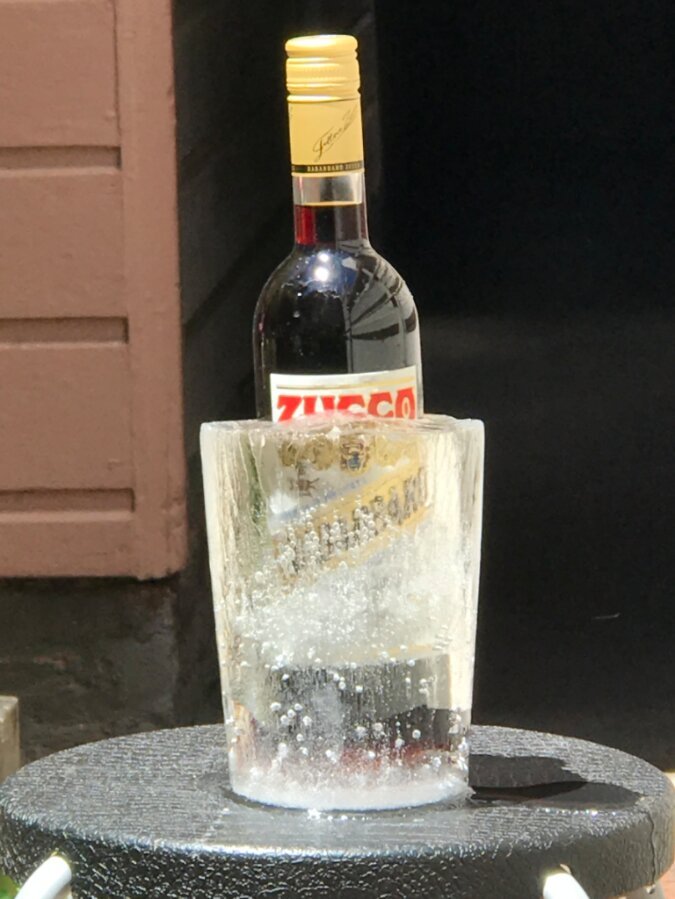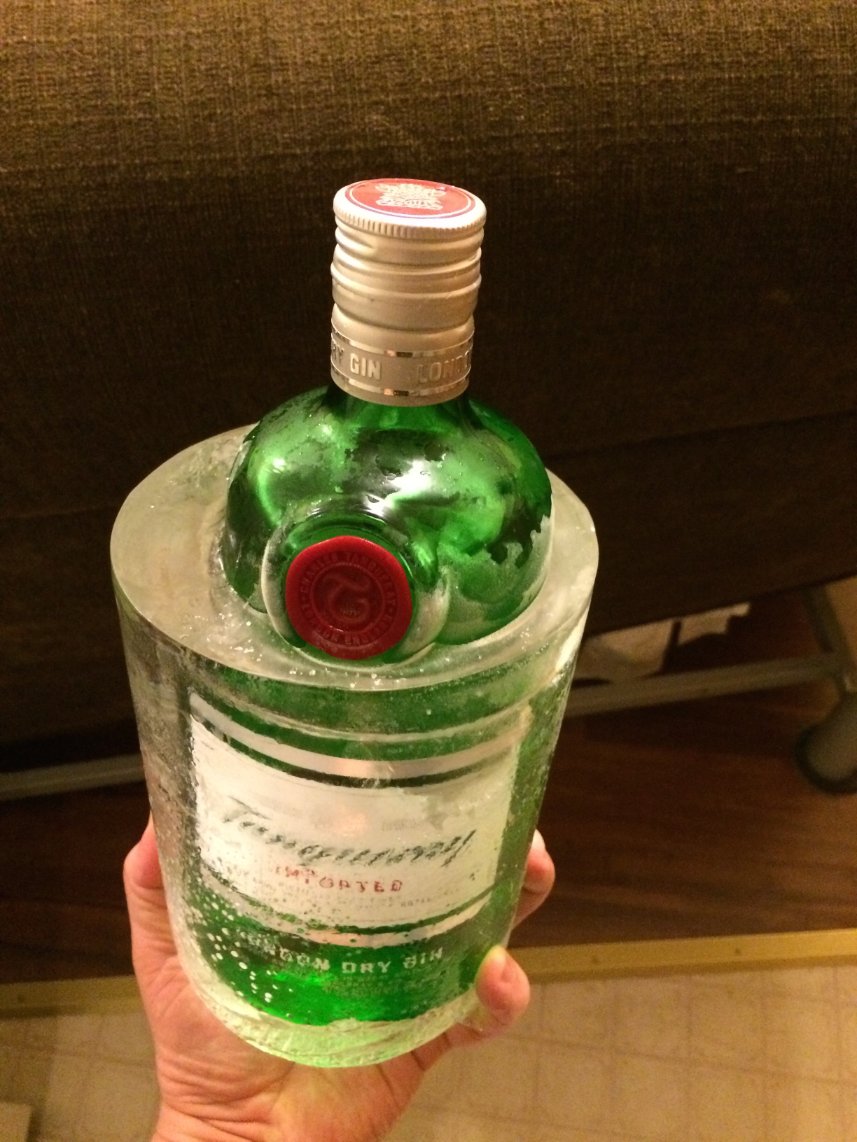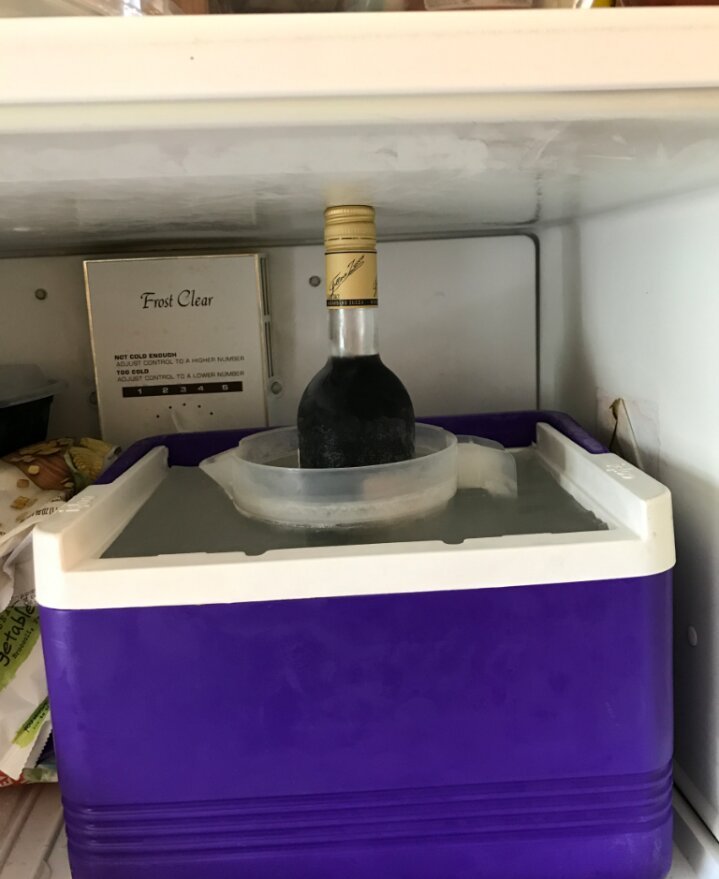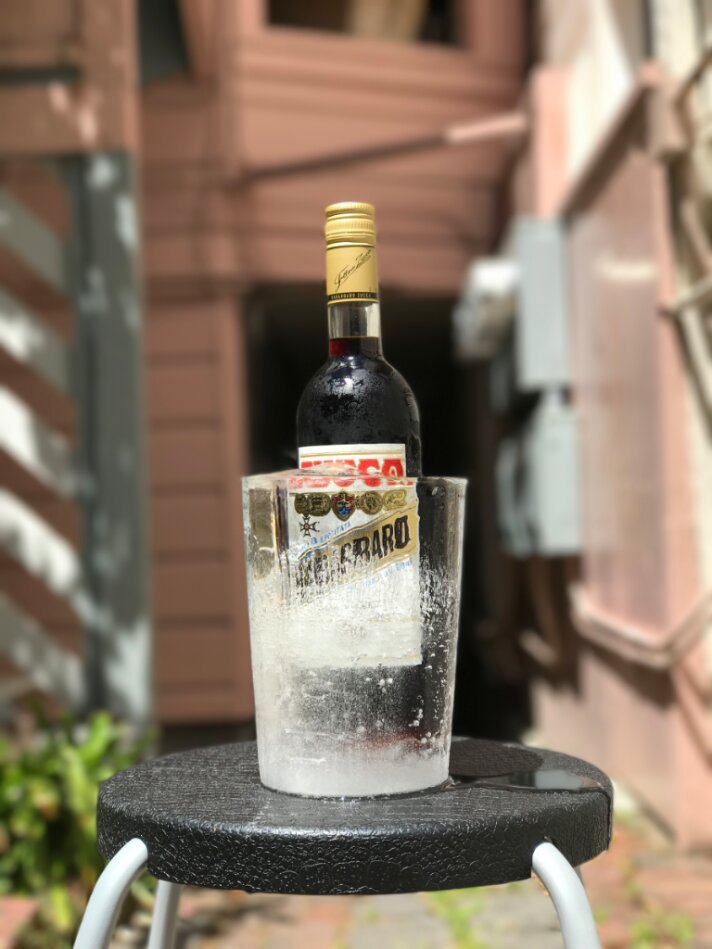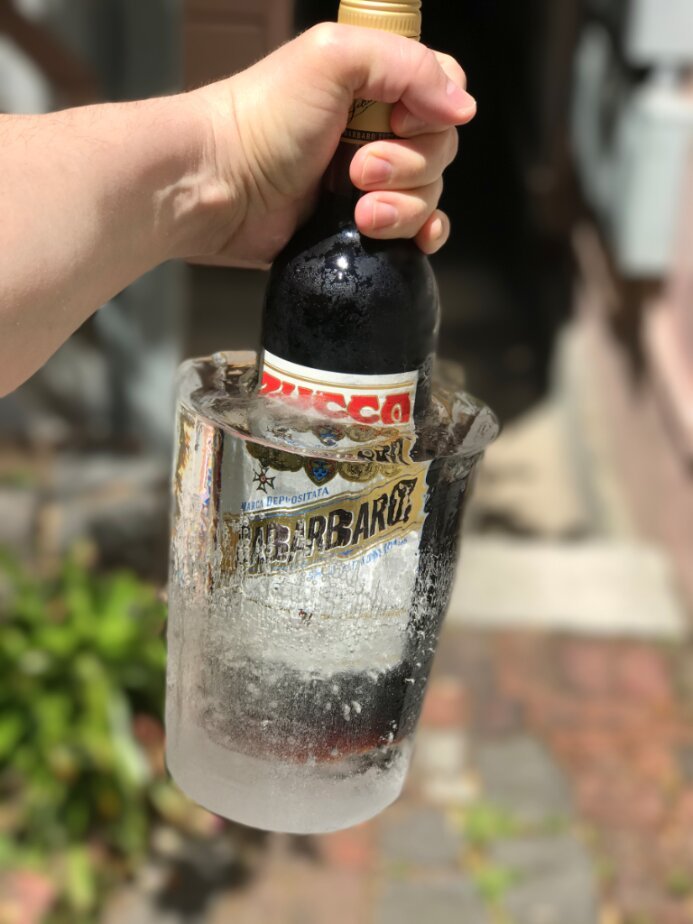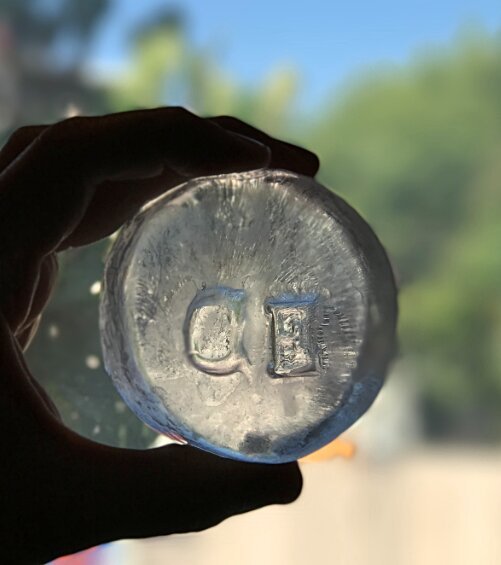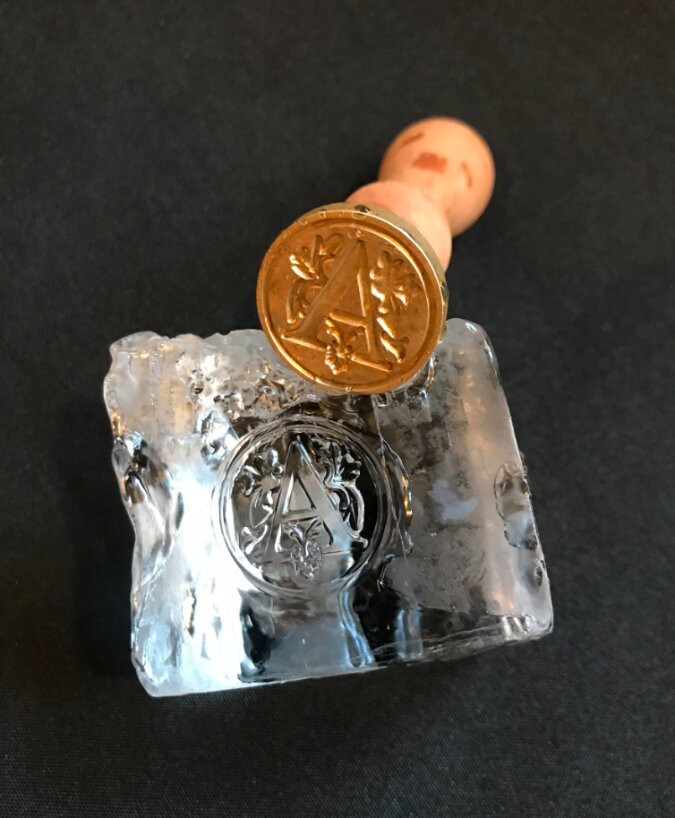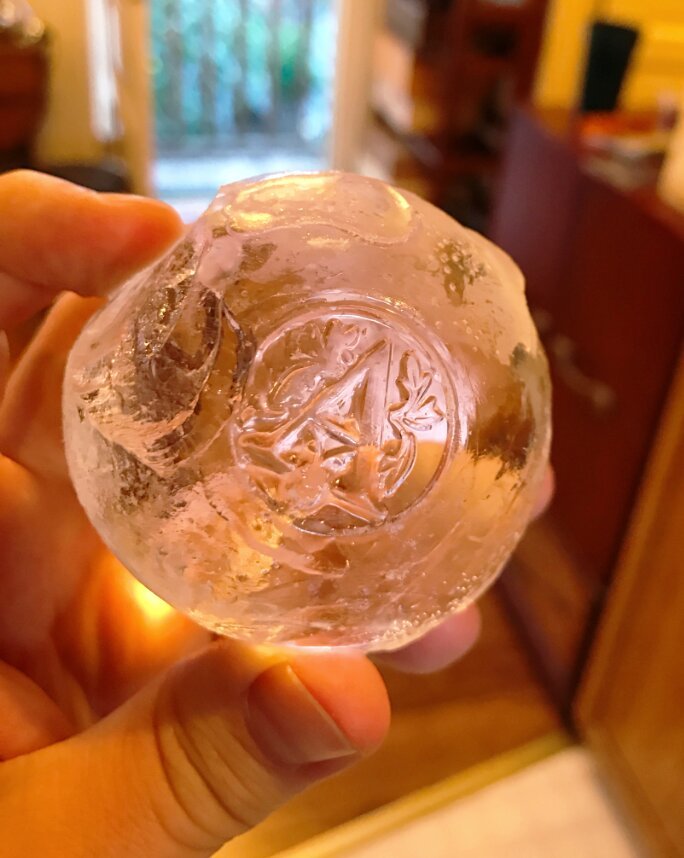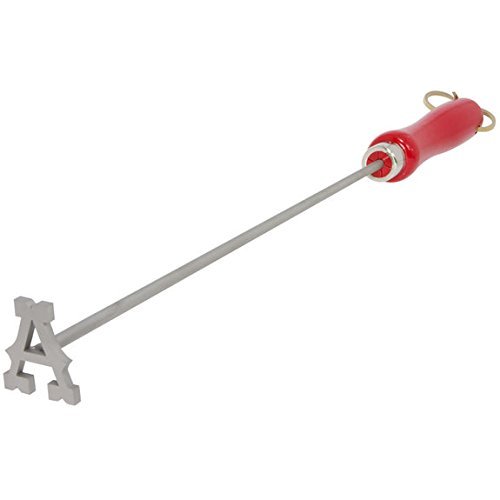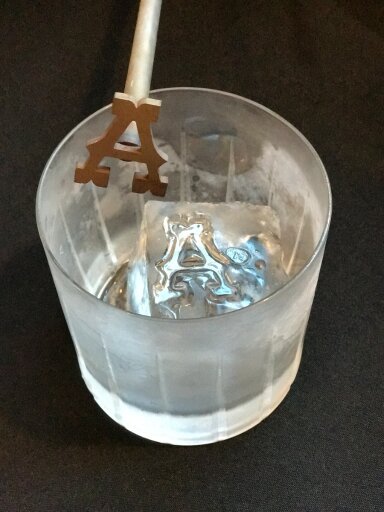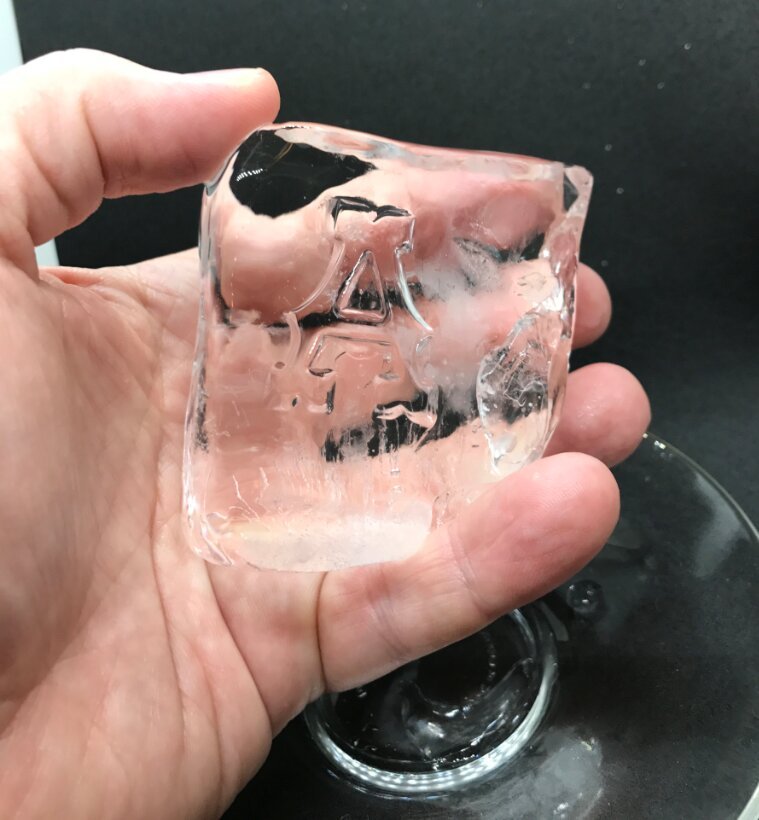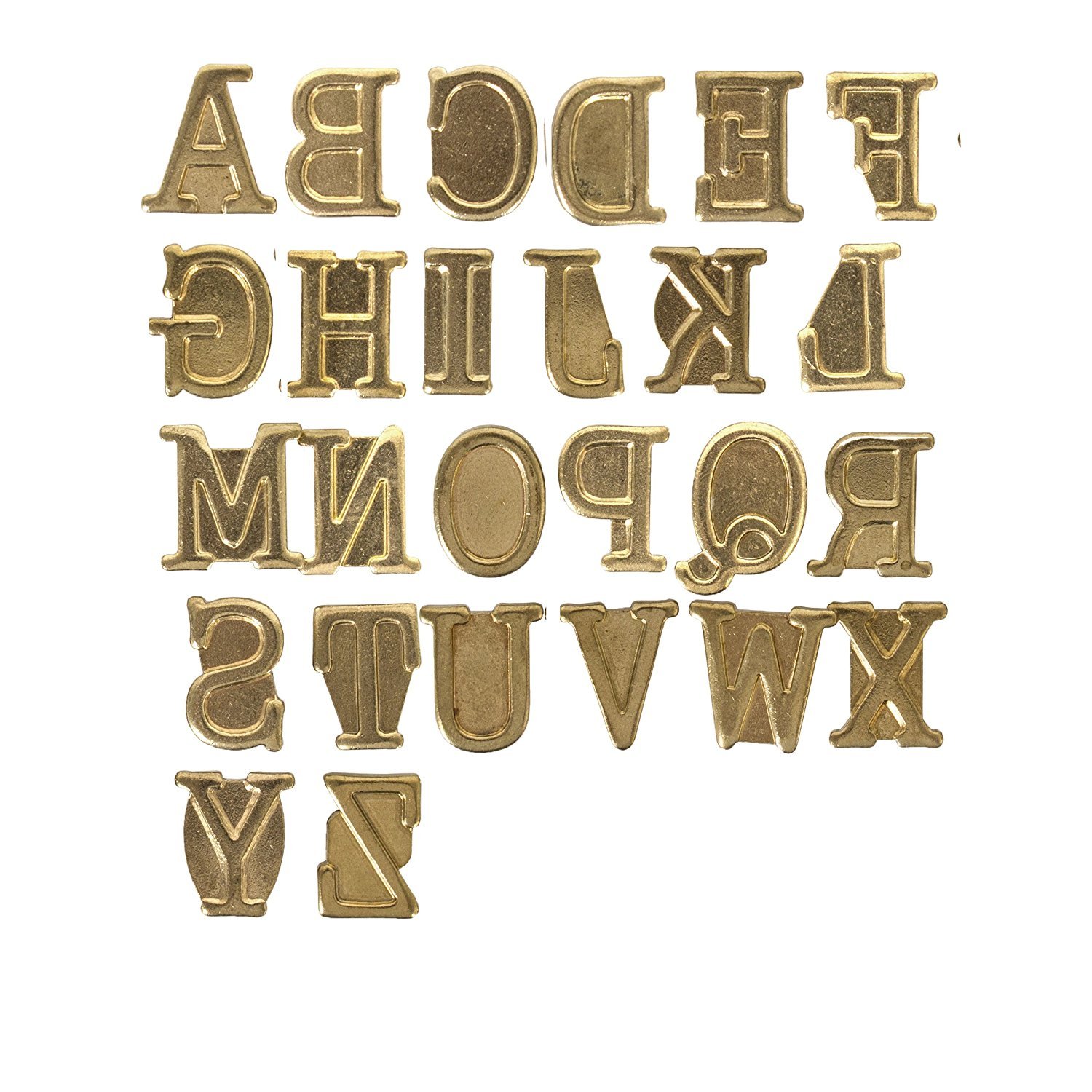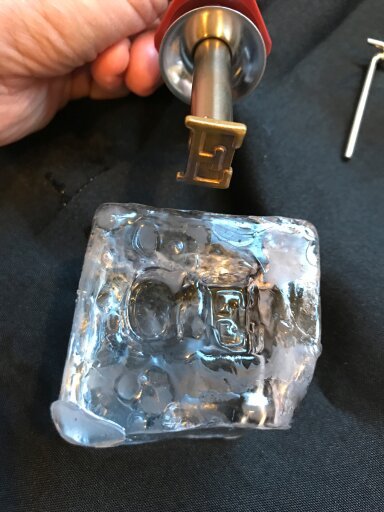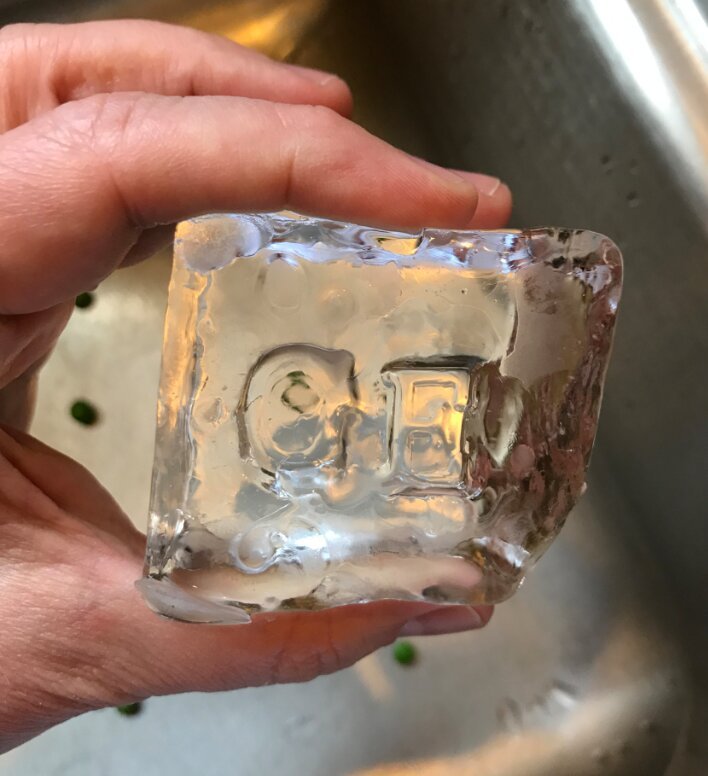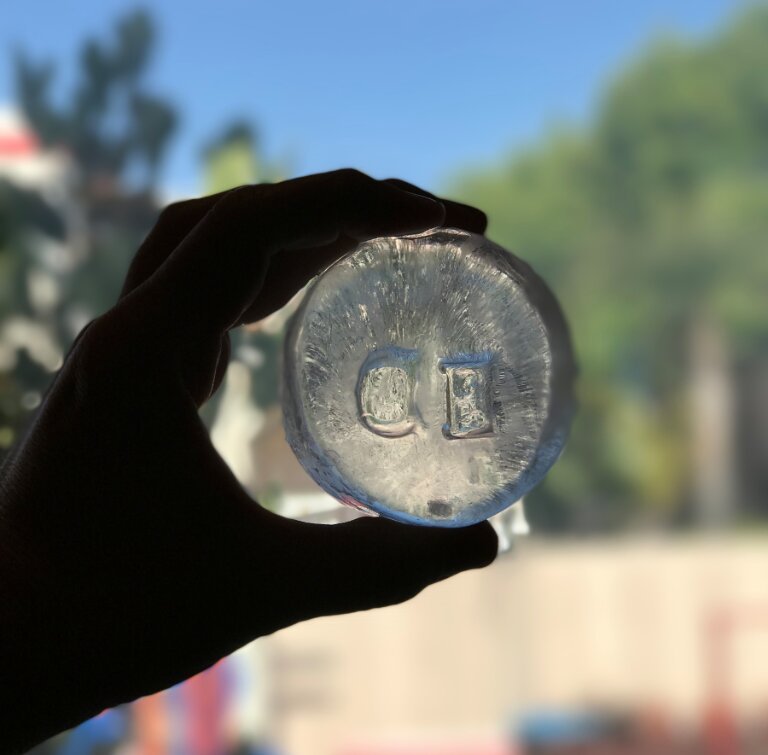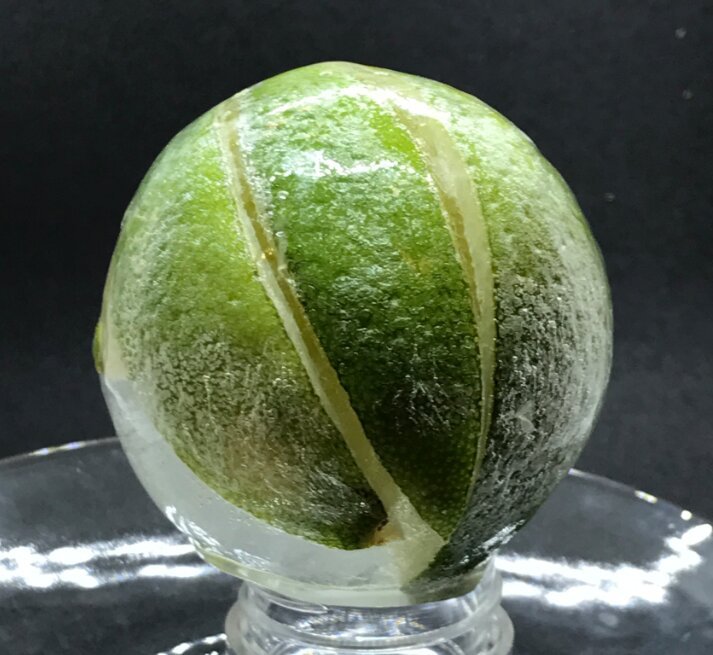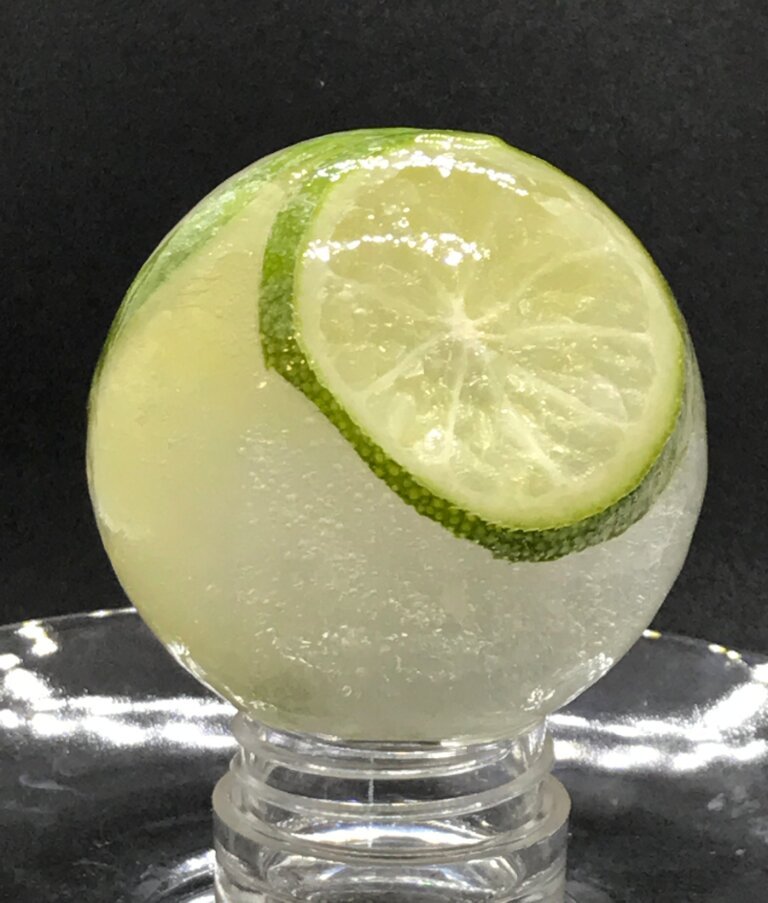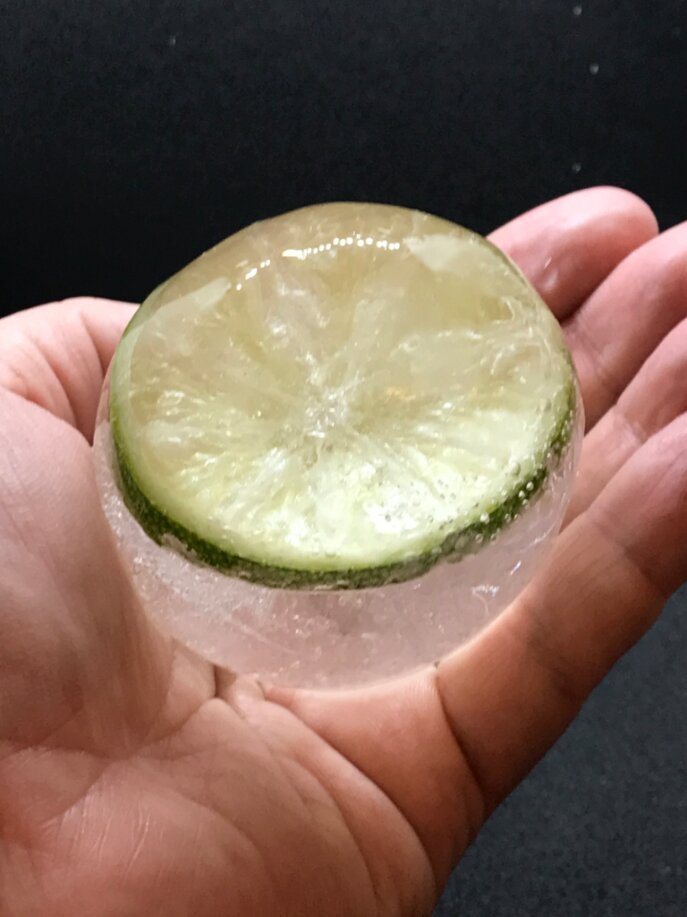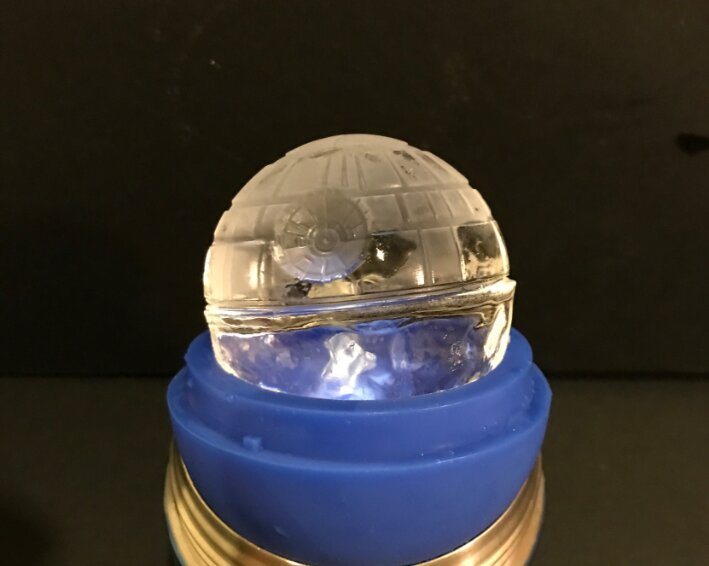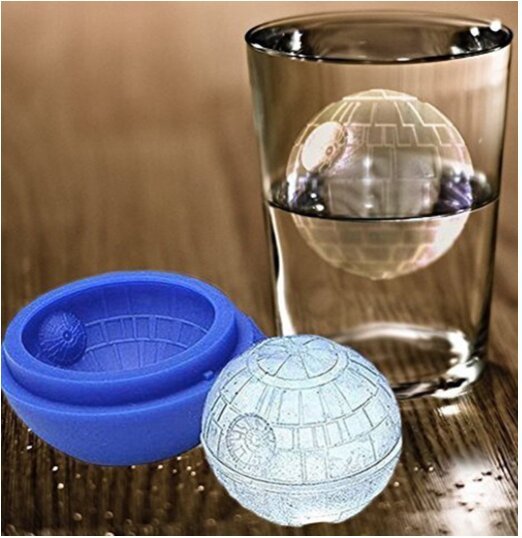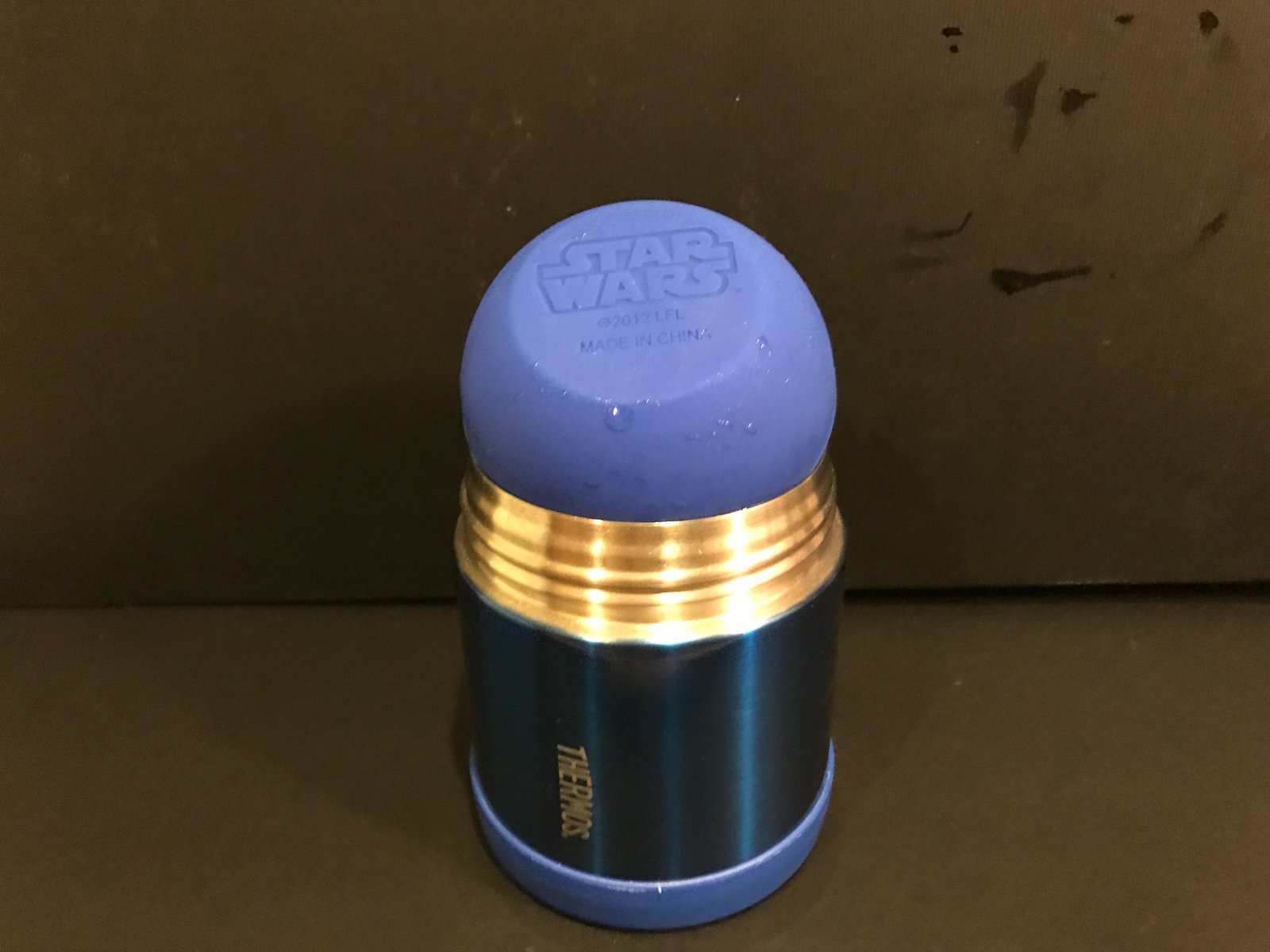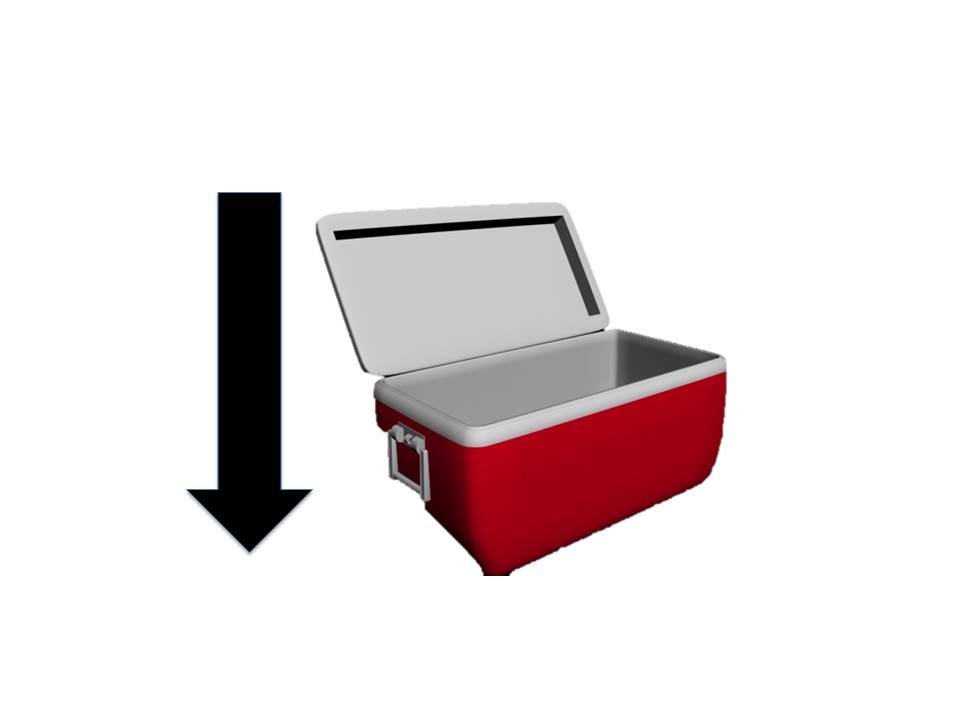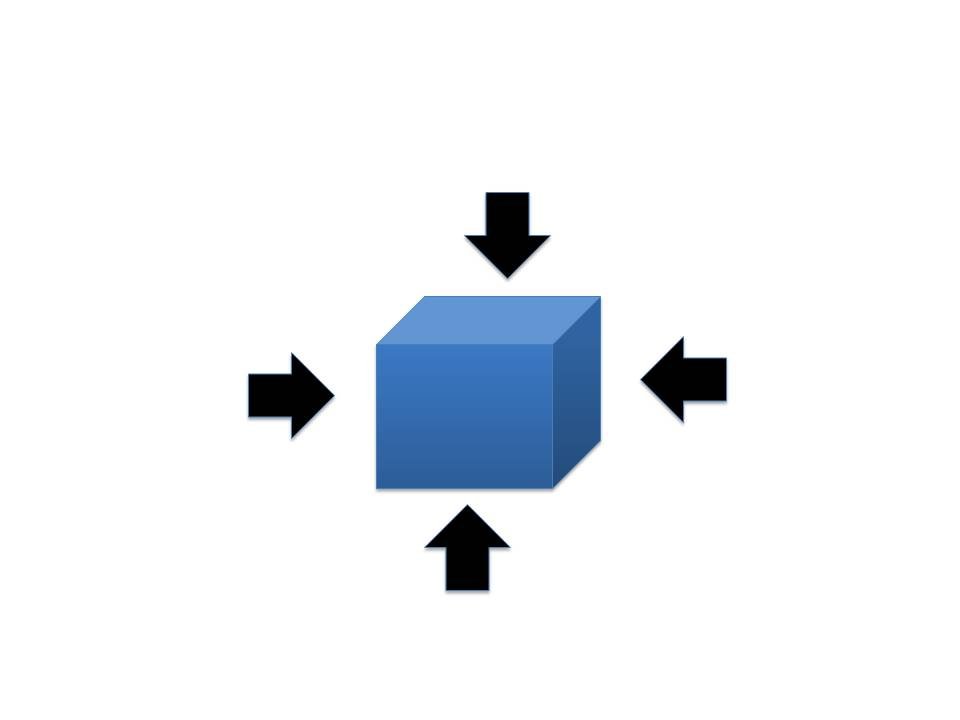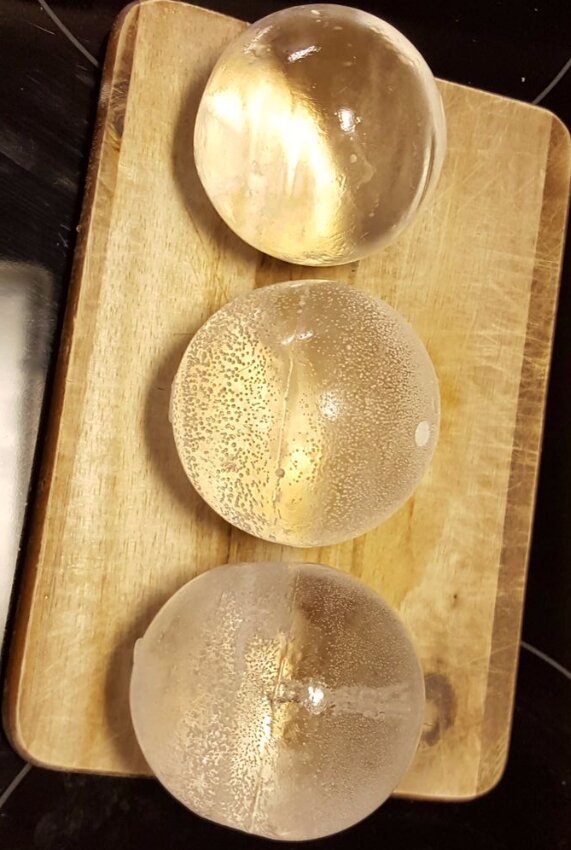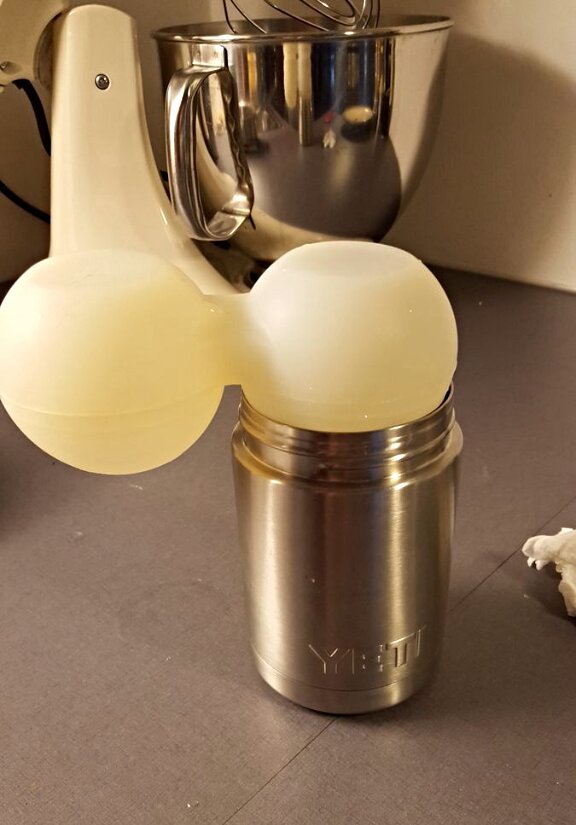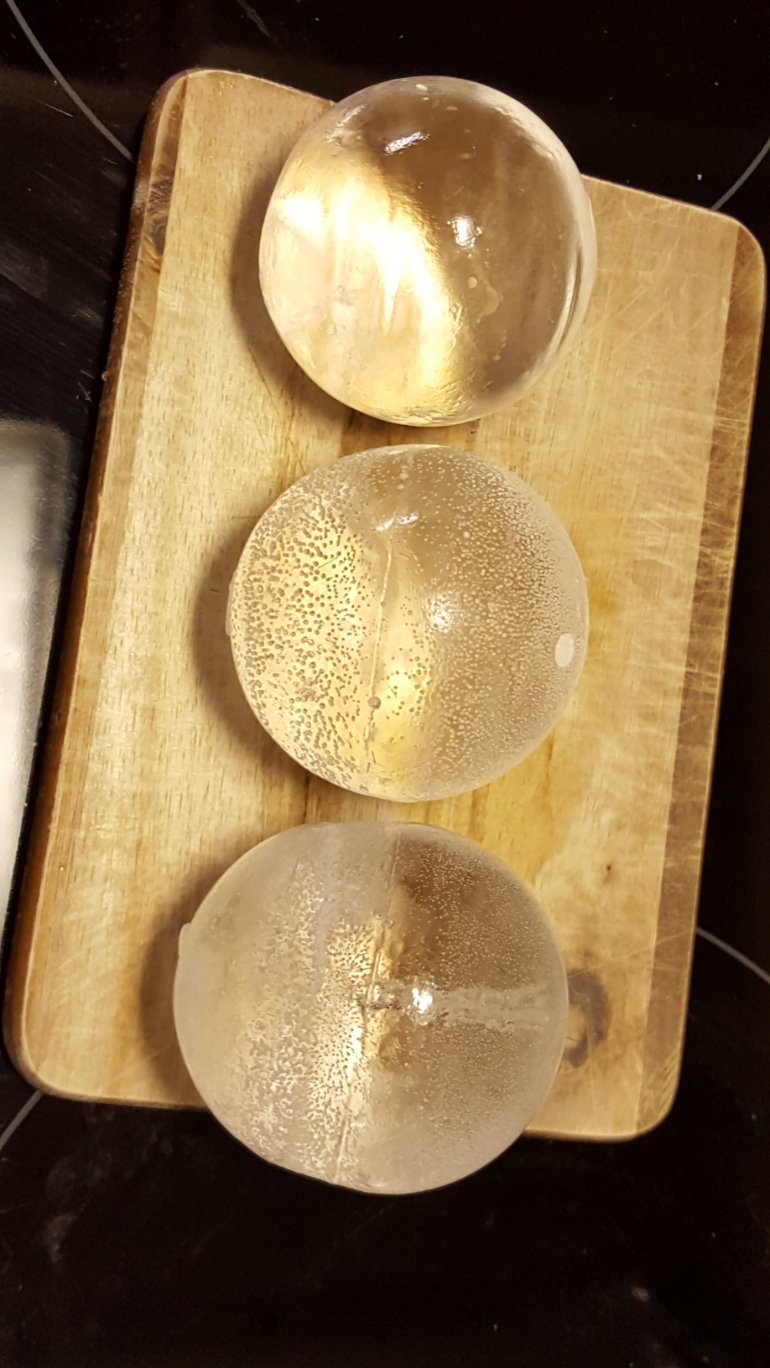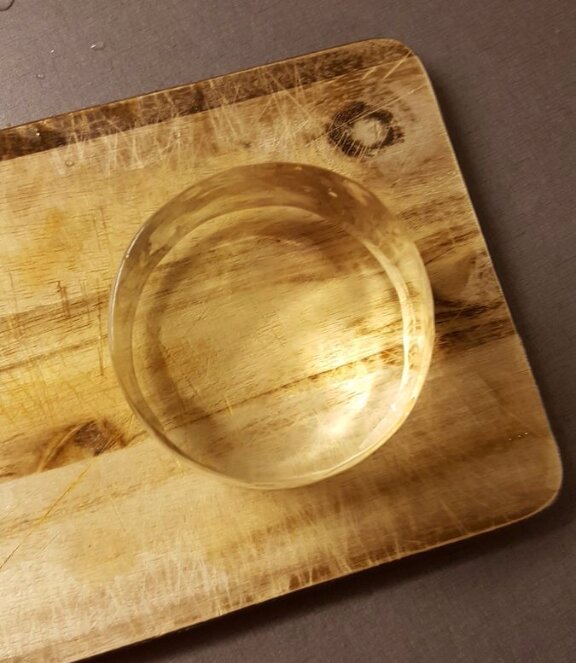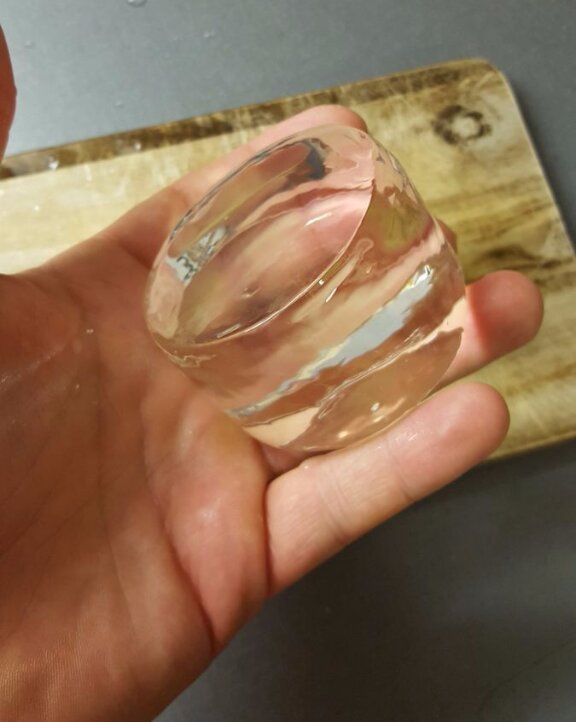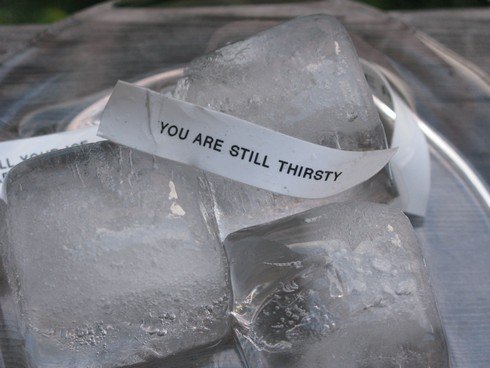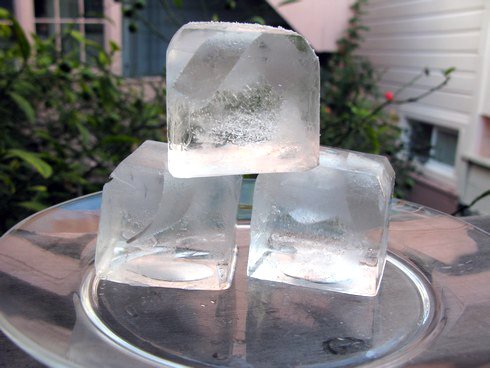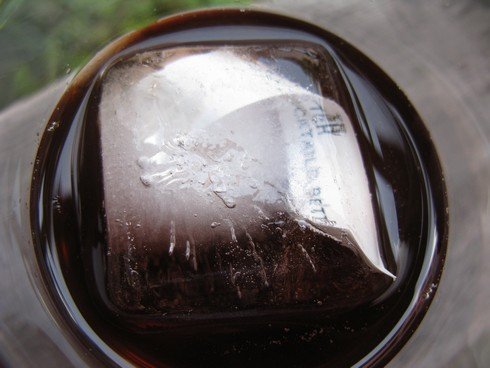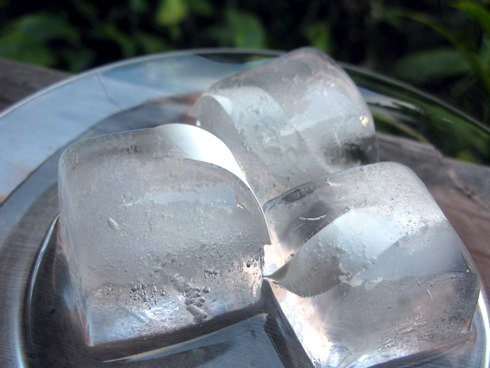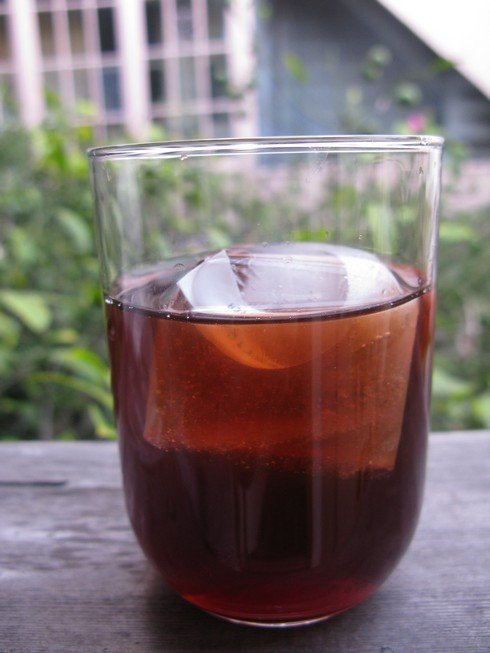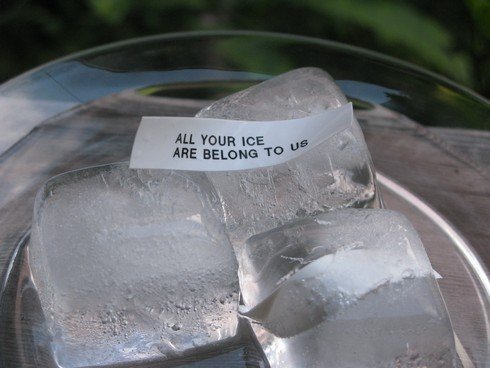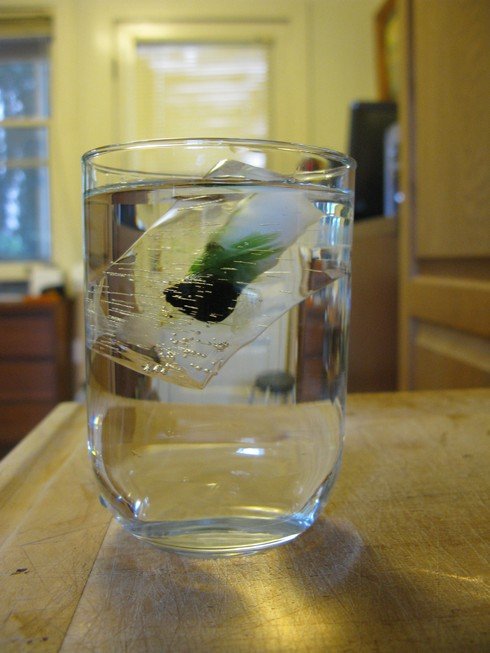Using just a cooler, a tube, and a bottle you can a super funky display for your party or for bottle service at your bar.
If you're just getting started into ice nerd stuff, you'll want to check out the Index of Ice Experiments, where you can get a definition of Directional Freezing to see why this works, and see other fun projects.
I originally developed this technique for the bar Whitechapel, which was looking to do a unique Martini cart with frozen bottles.
Simply put a bottle inside a tube of some sort (this is a metal utensil holder like you'd see at a salad bar) and fill both the tube and the rest of the cooler with water. Directional Freezing will take care of making the top part of the ice clear. The cloudy part is all around the bottom of the bottle. If you wanted it 100% clear around the bottle, you'd simply put it on a short riser inside the tube.
Then freeze it (with the top off the cooler) and pull it out.
I did this again with a bottle Zucca as I'm using it for a talk. I no longer had the metal utensil container so I put in a plastic pitcher. I wouldn't say it is the ideal container given that is has irregular sides, but it did the trick for proof of concept.
The bottle is a bit problematically tall for my freezer – I almost couldn't get the cooler out!
Cheers!
Check out all the ice experiments on Alcademics at this link.
